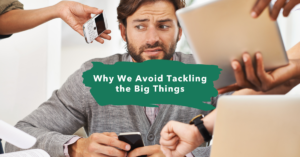It happened in a period of 10 minutes. I saw it before my own eyes. My bright, adventurous almost fearless soon-to-be 3 year old granddaughter went from being independently capable to dependent all thanks to the boy in red sweater.
I had taken her to Chuck E Cheese’s. If you’ve not been, it is a combination of pizza parlor, rock stage and kiddy casino – on steroids. Aubrey had been once before, so she knew the ropes. And after taking a swift peek at all the blanging, blinking and beguiling electronic games, she headed straight for the indoor play space.
I was not surprised, as climbing, swinging and sliding have always been a favorite. But immediately I realized that this particular play set was going to challenge her. There were a series of 3 platforms children had to hoist themselves onto to ascend to the top. They decreased in height, but the first one hit her at about shoulder height- which I feared was a bit too high for her to manage.
I was curious as I watched her try and try again, as swarms of children swarmed over and around her, impervious to her dilemma and seeing her only as an impediment to their own ascent. And then magic happened. A boy in a red sweater, about a year older than her, noticed her struggles. He turned around, offered her a hand and pulled her to level one. And did the same to level two and then three and the top. They slid down the swirly slide, and both immediately entered again to make a new ascent.
And the boy in the red sweater, once again, climbed first, turned around, offered his hand, and helped her, level by level. This happened over and over and over – with an established pattern of him going first, turning to offer a hand, time and time again. I was touched by his kindness and impressed by his social awareness and patience. I suspected he had parents who would be quite proud to see what a nice kid he was.
After what seemed an eternity, I told Aubrey that we needed to move on and try new things. She was instructed to thank the boy in the red sweater (which she did) and we proceeded to exchange a cup full of tokens for the opportunity to try (and mostly fail) at the electronic games, be rewarded with a pitifully small amount of tickets, and then later to redeemed for bright and attractive plastic junk.
Having just about all I could bear, I told Aubrey she could pick one last thing to do. She immediately headed to the plays space again. I watched her eager anticipation as she entered and it only took a second before she returned to me confused and crestfallen. “Where is the boy in the red sweater?” she bemoaned. “Gone on to other things.” I explained, followed by, “But let me show you how can do this on your own.”
I ducked to enter the play space with her at my side, and explained how she could put her hands just so and her foot right here and pull herself up. And she just stood there and looked at me. “But where is the boy in the red sweater? I need him!” “No you don’t. Look. Do it this way. You can do it.” And back and forth it went, and I observed this little one who pushed the boundaries of climbing ever day melt into a puddle of perceived ineptitude.
Thinking her internal drive to climb would overcome this temporary setback, I said, “I am going to show you one more time and then I KNOW you can do this on your own.” I did one more demo and then stepped back to more adult friendly environs and observed. She made a feeble attempt. And there was much looking around, still searching for the boy in the red sweater. Another feeble and half -hearted attempt. I could see the discouragement in her shoulders and tilt of her head.
She then employed a different strategy. As each child ascended the first platform, she reached out her hand in an invitation to pull her up. An amazing number of children looked at her and promptly just went on their way. She upped the stakes. Now it was not only her hand reaching up, but eye contact. Same results. And finally, she began to get more assertive. A hand extended, eye contact, a tap on the arm and a verbal request for help. Still many ignored her. Finally another young boy turned to help. Unlike the boy in the red sweater, he needed prompting at every level – but he consistently would accommodate her requests for help. And so there were at least 10 more ascents and 10 more thrilled descents in the swirly slide – and even with this new young gent’s begrudging help did Aubrey make a serious attempt to scale the platforms, even the easy ones at the top without his help.
I’ve pondered this situation time and time again. Amazed at how quickly Aubrey went from independence to dependence. How even patient teaching from her trusted Mushka (her name for me) could not dispel the notion that she was incapable of the climbs. Of her inability to discern the easier steps from the big one, consequently needing assistance on ALL of them, not just the first steep one.
If all it takes is a few minutes from a helpful and friendly boy in a red sweater to undermine confidence and ability for a well-balanced and overly confident 3 year old, what is happening with others? How many times are good intentions for support and help internalized by the recipient as proof of personal inability? How often is it easier to rely on someone else for something well within our grasp? How can we enable rather than disable those we seek to help? Where in my life am I relying on someone else’s help rather than stretching and becoming independent?
I don’t have many answers – but am struck that these are questions our schools, government and social services organizations would be well served to study and master. I’m interested – what do you think?





5 Responses
I have also seen learned incompetence in corporate settings, where employees have learned how to do things through hand-holding, and are then hesitant to apply what they learned to other issues. This can reflect issues with the organization’s culture, and then this turns into a big, juicy challenge. These are the problems that beg to be addressed.
Ah, the power of story! What lessons we learn from the littlest humans. I really enjoyed this post. A few thoughts:
1. Kids (and adults!) need chores and other assignments that stretch them. Too often, my kids grow past their assigned tasks and I don’t think to keep stretching them.
2. In my coaching of others, too often I give a hand up or a hand out, instead of an encouraging, “I KNOW you can do this on your own.” I think it stems from my compulsive desire to “add value.”
3. In society/politics (uh oh, I may be on thin ice here), your story brings into sharp focus a major disagreement between folk. Some feel it unkind to not offer a helping hand up the 3 platforms at Chuck E Cheeses, and some say, “You can do this on your own.”
Kris, I think you ask a very important question. Your observation is true not only of your grand daughter, but also as society as a whole. We see the independent adventurers succeeding even without a college degree like Steve Jobs, Bill Gates, and Scott Walker while other very well educated are pulling in welfare checks and relying on others to “exsist”.
We need to figure this out. What makes independent people become dependent? Is it the precieved kindness that makes us feel someone cares? Does that become addictive?
And on the other hand, at what point do we stop the helping hand? When is it a hand up vs. a dependent hand out? Do those of us giving the hand up also become addicted to thinking we are doing something good when we are really destroying that independence? What would have been better, the constant helping hand or if the boy in the red sweater would have offered the same “here’s how to get it done” example that you tried to give after the observed behavior?
I have been haunted by seeing a 3rd generation welfare family in Walmart. The daughter asked the grandmother for something and the grandmothers response was “you have to learn what the goverment check will buy and what it won’t” That was the same time that some states were discussing if welfare should be accepted for what I will just classify as “porn”. We are into the 3rd and 4th generation of welfare recipinents who have learned to “work” the system.
It is important to look closely at where we are going. At what point does help become dependence and, as hard as it is, when do we say ‘no more’? I think we also need to look at the way advertising is encouraging us to contribute with “if you purchase this, we will give $$ for ‘this charity’ “. Are we also becoming pawns of others trying to do “good” with our money and resources?
Perhaps it is time to learn the lesson of the 100th monkey observation and avoid becoming a society of dependent people depending upon the independent for help. Is it time to return to teaching a person to fish rather than handing out cheese and rice?
This is a great post. I love it and hope you don’t mind me sharing it – as yours of course. As a manager I am going to remember this and attempt to apply it. I know I am guilty of offering a hand up rather than encouraging independence and trial and error. I had a Japanese manager once who modeled this for me. He would not give me the answer or even show me how to do something (computer entries). He said, “You must struggle to learn”. I have always remembered that for myself but not applied it to my management of others until now. Thanks so much for this well illustrated principle.
Thank you for sharing this poignant story. It truly does take two to tango for this dynamic. The experience may have equally affected the young mind of the boy in the red sweater as he gleaned the reward of feeling needed, appreciated, valued for just being kind. Getting addicted to being benevolent and seeking the smile/appreciation pellet of another person is just the other side of the same coin.
Thank you, again. You just told my story.
Comments are closed.